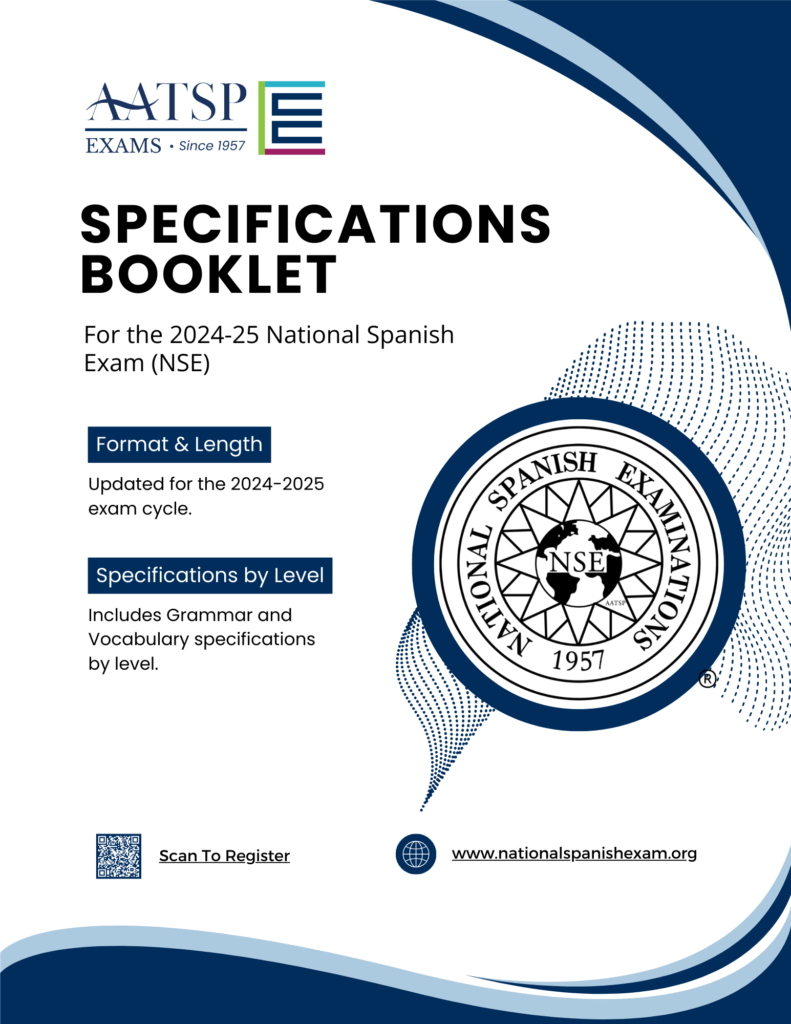NATIONAL SPANISH EXAM
Exam Overview
The National Spanish Exam (NSE) is an online, motivational competition that recognizes, stimulates, and promotes students’ linguistic competence and proficiency in Spanish. In addition to the contest, the NSE is a standardized online assessment for grades 6-12, that measures both content standards (vocabulary and grammar) and performance standards (reading and listening comprehension). This tool provides valuable feedback on the students’ proficiency, monitoring and tracking their progress and development each year.
Students who place at or above the 75th percentile at the national level receive medals (gold, silver, bronze, honorable mention) and are eligible to apply for several types of scholarships (Global Citizen Scholarship, Junior Study Abroad Program, Senior Scholarship).
Teachers receive individual reports for each student disaggregating data in various ways so that teachers can identify strengths and weaknesses of individual students for specific standards, measurement categories, and learner outcomes; show growth from one year to the next; and/or report other variables as needed!
Regular Registration: November 1, 2024 – February 7, 2025
Exam Administration Window: March 3, 2025 – April 14, 2025
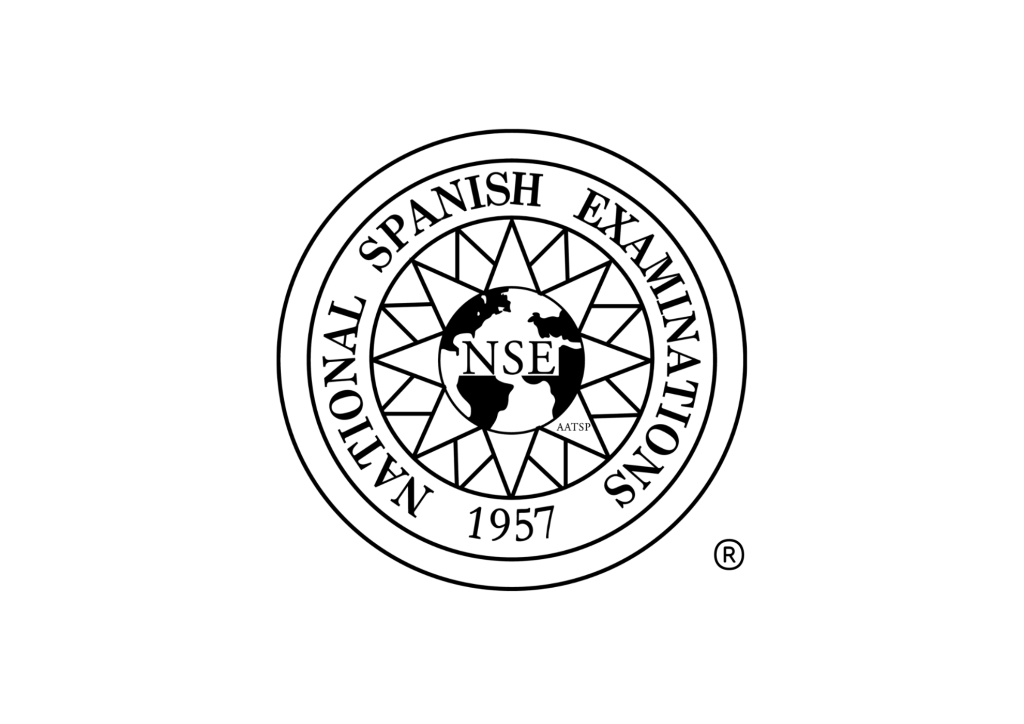
Exam Overview
For: Middle to High School Students
THE 2024-25 EXAMINATION PERIOD
IS NOW CLOSED.
MORE INFORMATION
About the Exam
Measurement
Format & Length
Levels
Categories
Prizes
TIPS
Cost Information
What does the NSE measure?
The National Spanish Exam (NSE) is a standards-based assessment which evaluates both content standards (what a student knows) and performance standards (what a student is able to do) over various levels of secondary instruction (grades 6-12).
Content
The Content section of the test assesses content standards through specifications for vocabulary and specifications for grammar.
Performance
The Performance section of the test assesses performance standards as defined by the National Spanish Examination Proficiency Levels. This section assesses Interpretive Communication: both Reading and Listening Comprehension.
Exam Format & Length
The format and length of the National Spanish Exam for all levels (01-6) is as follows:
Content exam (vocabulary and grammar) is 40 minutes.
Performance exam (reading and listening) is 40 minutes.
For a more detailed guide on format and length, download the updated NSE 2024-25 Format & Length chart.
Proficiency Levels
The National Spanish Exam (NSE) offers seven levels of proficiency, ranging from Level 01 – Level 6.
Level placement is at the instructor’s discretion. Students are not allowed to repeat Levels. Determining the appropriate Level to administer the NSE should be decided by the teacher. Please use the following chart as a tentative comparison guideline (or click here to download the chart):
| AATSP Exams | ACTFL | CEFR | DESCRIPTION |
|---|---|---|---|
| Level 01 | Novice Low/Mid | < A1 | Recommended for entry-level beginners. The course content is equivalent to the first half of the Spanish 1 syllabus. |
| Level 1 | Novice Mid/High | A1 | Students whose course content is equivalent to the second-half of the Spanish 1 syllabus or entry-level for any program where the course content is equivalent to a full year of Spanish 1. |
| Level 2 | Novice High/Inter. Low | A1/A2 | Students whose course content is equivalent to the Spanish 2 syllabus. |
| Level 3 | Intermediate Low/Mid | A2/B1 | Students whose course content is equivalent to the Spanish 3 syllabus. |
| Level 4 | Intermediate Mid/High | B1/B2 | Students whose course content is equivalent to the Spanish 4 syllabus. |
| Level 5 | Intermediate High/Adv. Low | B2 | Students whose course content is equivalent to the Spanish 5 or AP Spanish* syllabuses. |
| Level 6 | Advanced Low/Mid/High | B2/C1 | Students whose course content is equivalent to the Spanish 6 or AP Literature* syllabuses. |
*AP Language / IB-SL
Students enrolled in a course labeled AP Language or IB-SL should be registered to take the current year’s NSE at one level higher than the course in which they were enrolled the previous year. For example, an AP Language/IB-SL student who sat for the exam at Level 4 in 2023-2024 should be placed in Level 5 in 2024-2025. Under no circumstance should an AP Language/IB-SL student take the NSE at lower than Level 4.
*AP Literature / IB-HL
Students enrolled in a course labeled AP Literature or IB-HL must take the NSE at either Level 5 or 6. These students should be enrolled to take the current year’s NSE at one level higher than the course in which they were enrolled the previous year. Under no circumstance should an AP Literature/IB-HL student take the NSE at lower than Level 5.
*If a student competed in Level 1 last year, they should compete in Level 2 the following year. Please read our disqualification policy for more information.
Categories of Competition
The National Spanish Exam (NSE) is used to measure the performance and achievement of students who are studying the Spanish language in the United States. In order to allow students with like-exposure to compete against one another, three categories of exam competition have been defined.
Each instructor should use discretion when making a decision as to which category is appropriate for their student(s).
| Category | Description |
|---|---|
| Classroom Experience | A student whose only (or main) contact with Spanish is in a classroom setting. |
| Outside Experience | A student who has had specific experiences with Spanish beyond the classroom, for example:
|
| Bilingual | A student who comes from a home where Spanish is the primary language, and the student can communicate in both Spanish and English fluently and quite accurately. |
Teacher Discretion is Advised
Category placement is at the instructor’s discretion. We recommend reading the following indications before making a decision:
Does my student belong in the Outside Experience or Bilingual category?
Examples
The following language experiences are examples of how a student may be placed in either the outside experience category or in the bilingual category:
• A student has lived (after age 6) in a Spanish speaking country for more than a year.
• The student has studied in a Spanish speaking country for more than 4 months.
• A student whose principal language at home is Spanish, or a mixture of Spanish and English.
• A student whose principal language outside the home is Spanish, or a mixture of Spanish and English.
What about native language speakers?
Native Spanish speakers should compete in the Bilingual Category only. The teacher may need to evaluate the appropriate Competition Level of the NSE for these students to maintain the integrity of these National Exams.
• Foreign exchange students.
• Students who were born in and who have studied the Spanish language formally in a native classroom environment before moving to the United States.
Prizes
Students with outstanding scores on the NSE are recognized as follows:
Premio de Oro

Gold medals are awarded to students who score at or above the 95th percentile. The 99th percentile is the highest rank.
Premio de Plata
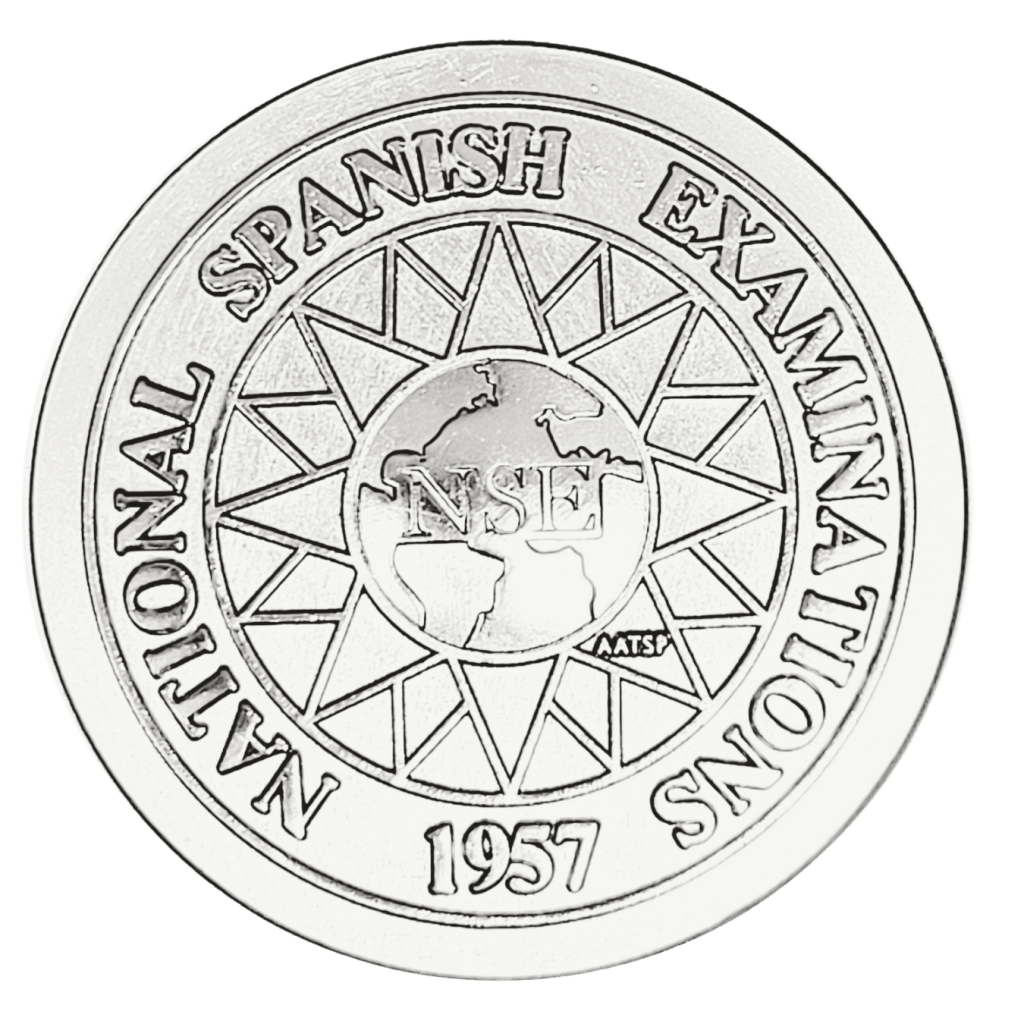
Silver medals are awarded to students who score at or above the 85th percentile.
Premio de Bronce
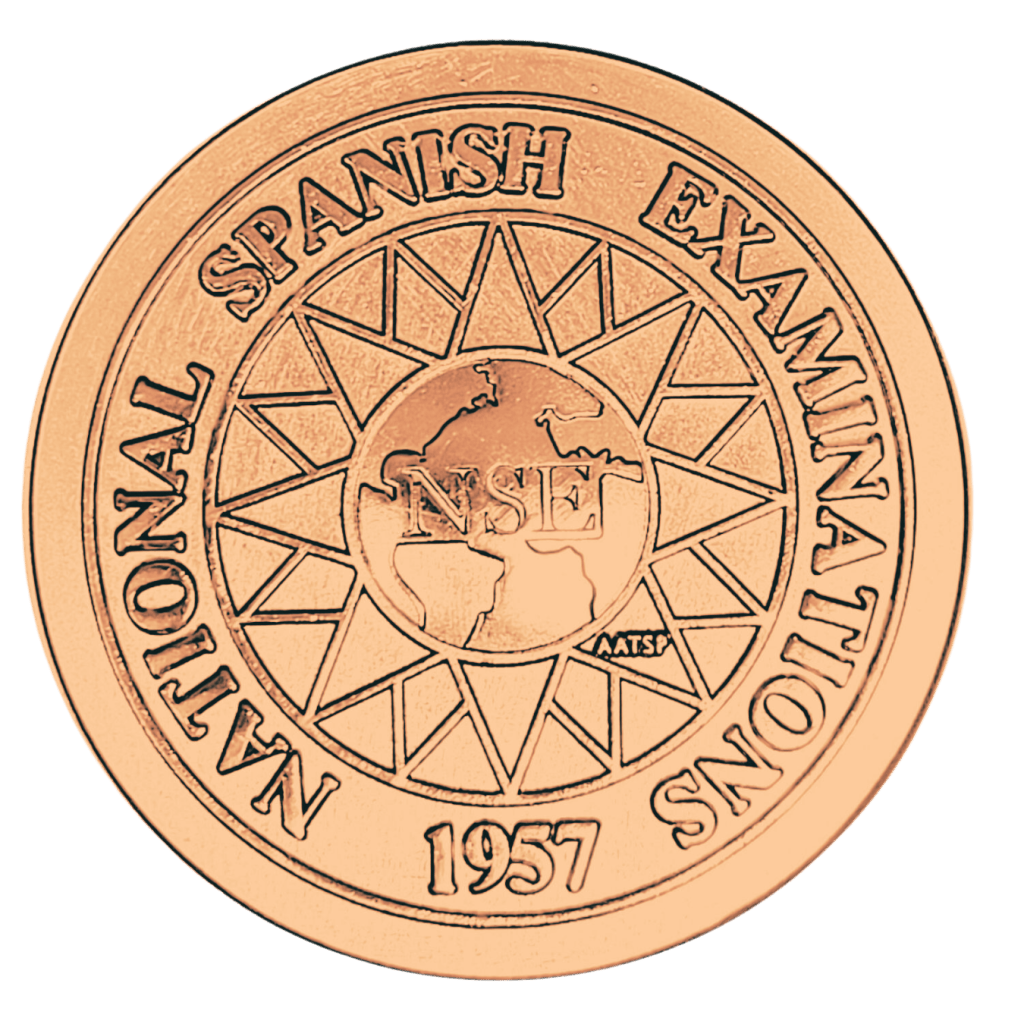
Bronze medals are awarded to students who score from the 75th through the 85th percentiles.
Mención Honorífica
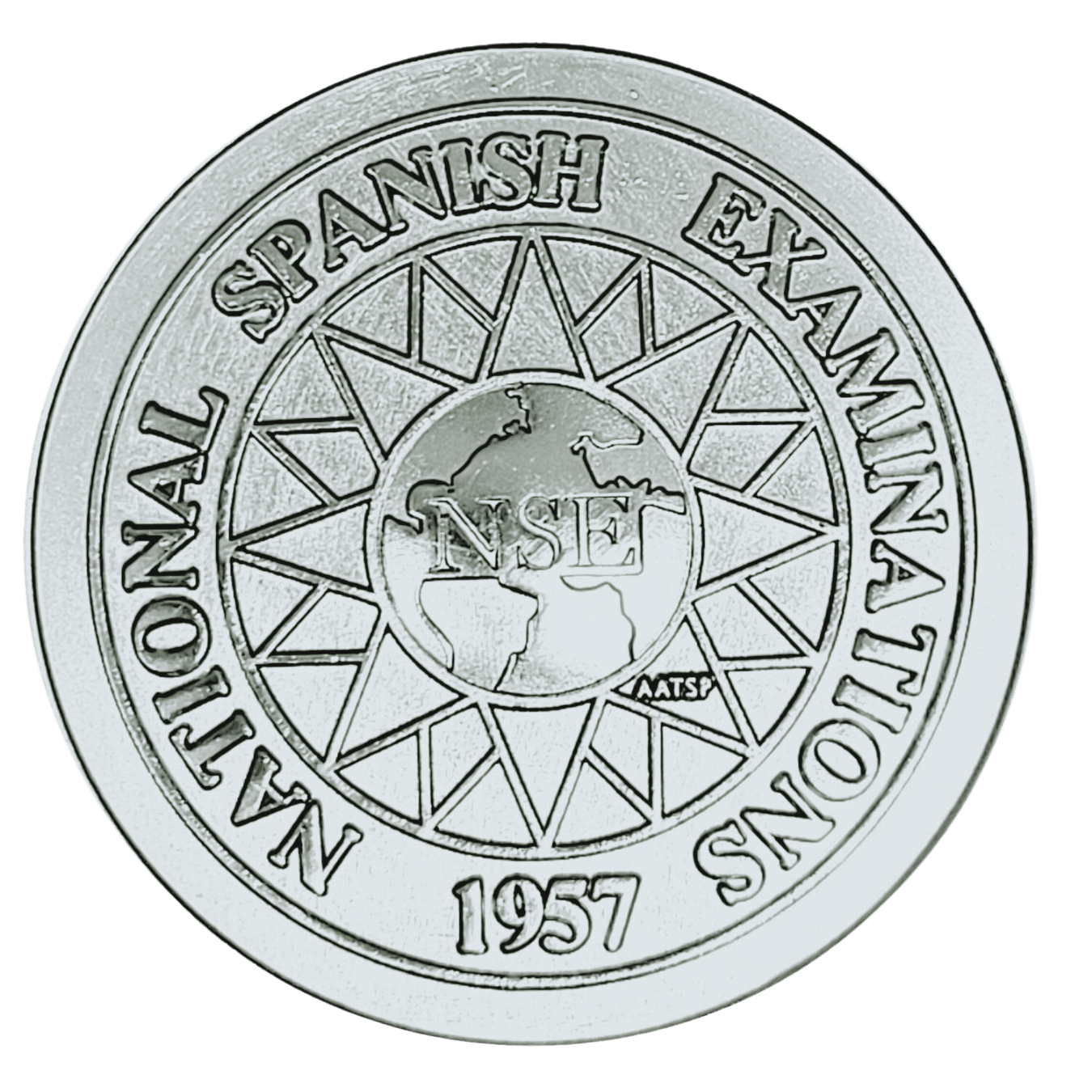
Honorable Mention medals are awarded to students who score from the 50th through the 74th percentiles. Honorable Mention medals are available for purchase at www.nse-store.com.
Perfect Score
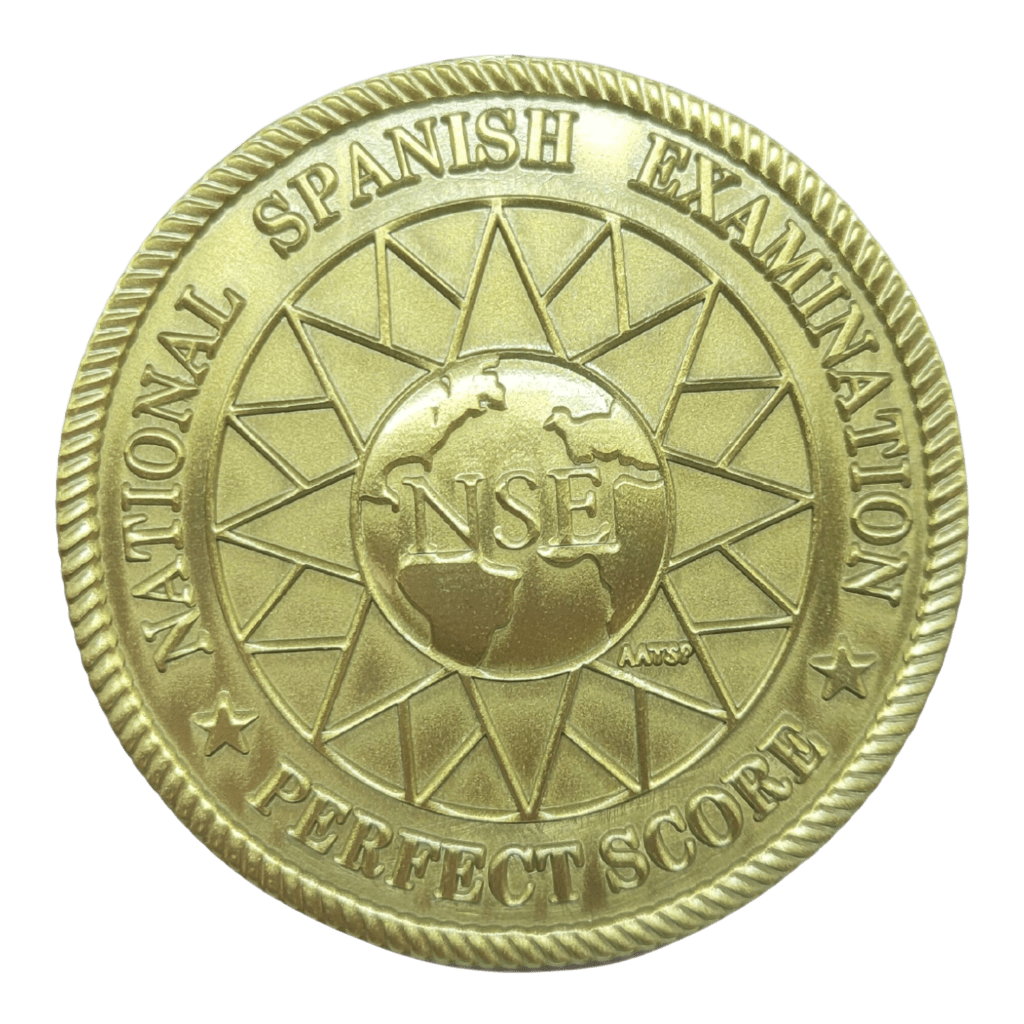
Perfect Score medals are awarded to students who answer every question correctly.
Gold, silver, and bronze medals are mailed directly to schools addressed to one teacher shortly after national results are posted, and may take 4-8 weeks to arrive. The NSE does not ship medals internationally.
Students with outstanding results are also eligible to apply for our student scholarship programs. Instructors will be able to find printable certificates available for download in their Lingco Language Labs account after results have been posted.
• The exam has two 40-minute sections that can be given at any time during the exam administration window.
• Exam sections may be administered separately or consecutively. For example, many teachers choose to administer the exam sections on two separate days during the regular class period.
• If a student is absent on the day of the administration of the exam, the teacher has until the last day of the examination window to administer the exam. The AATSP Exams office cannot grant extensions beyond the closing date. We strongly advise administering the exam well before the closing date to avoid missing out on re-take opportunities for absent students.
• Teachers who are new to the new Lingco Language Labs platform or administering the exam in a new school setting are encouraged to use the FREE Practice to test the platform and ensure that it runs smoothly before registering for the exam.
• To apply for Student Accommodations, learn more about technical requirements, how to disable translation features on your students’ computers, read our disqualification policy, and more, please visit the Exam Proctoring section of our website.
Cost Information
There are two costs associated with administering the exam: student cost and instructor cost.
Student Cost
• Regular Registration: $5.00 per student*
Teacher/Instructor Cost
Giving the NSE is a membership benefit that is available for active members of the American Association of Teachers of Spanish and Portuguese (AATSP):
• Active AATSP Members: FREE ($45 First-Year / $65 Renewal)
• Non-Member Fee: $75
*Once Regular Registration has closed, we offer a Late Registration grace period at $6 per student seat. Teachers may add students during the examination window at $8 per student seat (a.k.a. Last-Minute Registration). Dates vary per year.
PREPARING FOR THE NSE
Exam Content & Practice
Grammar & Vocabulary Specifications
Interpretive
CommunicationVocabulary Lists
FREE Practice
Interpretive Communication: Reading & Listening
The National Spanish Exam (NSE) assesses Interpretive Communication in Reading Comprehension and Listening Comprehension.
Reading Comprehension
The student is given (1) a context in English, (2) an authentic text in Spanish and (3) a question based on one of the learner outcomes below and then followed by four answer choices. Learner outcomes increase in difficultly as the student progresses to higher levels.
Authentic texts are printed material / texts that have been produced by and for native speakers for a culturally authentic purpose, and may include:
- A sign
- Lists of words and phrases
- A schedule
- A personal note, letter, postcard
- Instructions / directions
- A posting on social media
- Menus
- Labels
- An advertisement, poster or notice
- A narrative
- A brochure
An excerpt or passage from:
- an article
- a letter
- an essay
- a journal / diary
- a magazine
- a book or novel
- a news source
- an editorial
- a short story
- a poem
- a legend
- a fable
- a fairy tale
- a website

Listening Comprehension
The student is given (1) a context in English, (2) an authentic spoken passage in Spanish and (3) a question based on one of the learner outcomes below and then followed by four answer choices. Learner outcomes increase in difficultly as the student progresses to higher levels.
Authentic texts are spoken passages that have been produced by and for native speakers for a culturally authentic purpose, and may include:
- A conversation
- A description
- A set of instructions / directions
- A film or video clip
An excerpt or spoken passage from:
- a news bulletin
- a radio broadcast
- a speech
- an article, a letter
- an essay, a magazine
- a play
- a newspaper
- an editorial
- a short story
- a poem
- a legend
- a fable
- a fairy tale
- a website
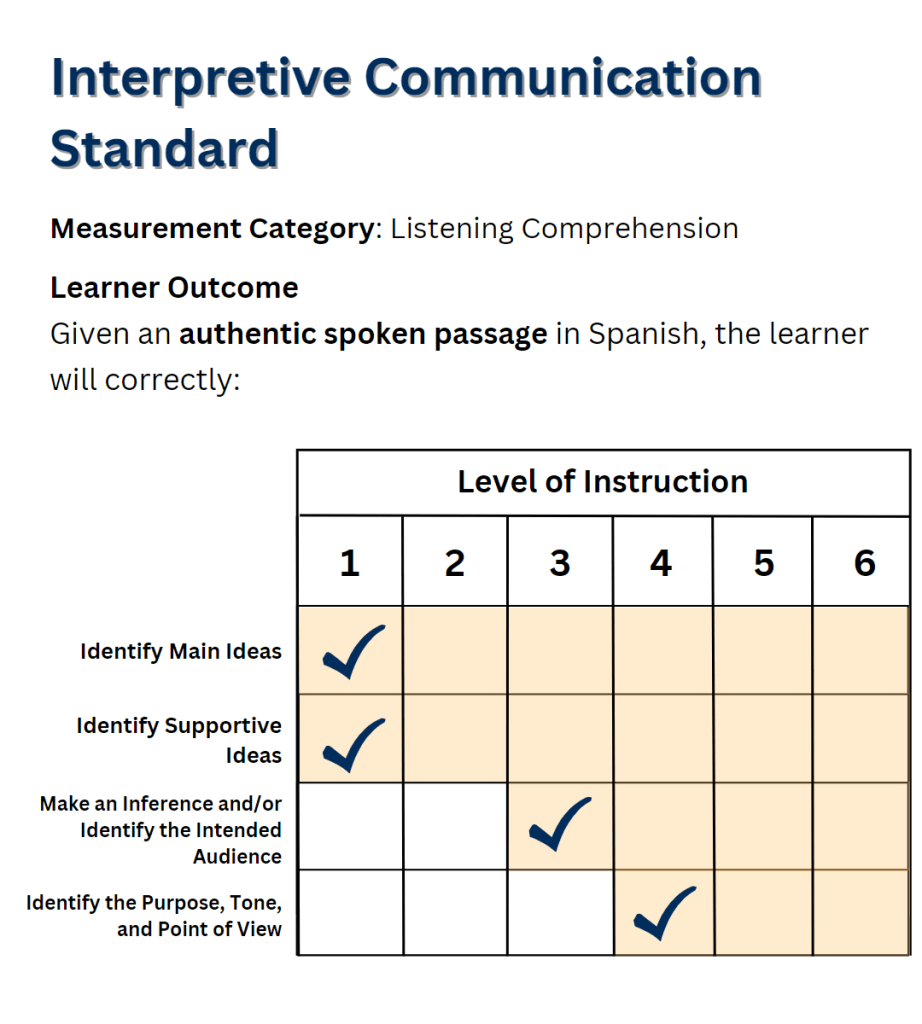
Vocabulary Practice
Here are the vocabulary areas for practice, aligned with the guidelines from our Specification Booklet. Keep in mind that since the exam is proficiency-based, students are not expected to memorize vocabulary, but rather to recognize and apply it in context.
FREE PREP
The National Spanish Exam (NSE) switched testing platforms in 2022 and a FREE Practice was created in order to give teachers and students the opportunity to familiarize themselves with the new Lingco Language Labs platform before formal examination time.
The FREE PREP includes practice material and mini-practice exams for NSE/NSA Levels 01-6. It’s a great preview tool for instructors who wish to present the material to their students and test the platform to ensure that it runs smoothly on school computers before confirming a formal exam registration.
The 2025 NSE/NSA PREP is now open!
Information For Exam Proctors
Visit our Proctoring section for more information about use of aids, student accommodations, and more.
TAKE THE INITIATIVE
Start the Conversation
Are you interested in administering one of our exams in your school? Click the button below and download our PDF conversation starters for teachers, instructors, and administrators.


